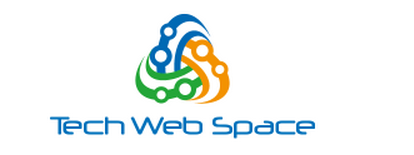
In the fast-paced world of software development, productivity isn’t just about speed—it’s about precision, alignment, and transparency. Agile methodologies have redefined how teams collaborate and deliver results. But even within agile frameworks, one piece often remains under-optimized: time tracking.
Why does time tracking matter in agile? Because when done right, it can transform vague estimates into actionable data, uncover hidden bottlenecks, and empower teams to sprint smarter, not just faster.
As we move into 2025, the convergence of agile principles and intelligent time tracking is becoming more than a trend—it’s a necessity.
The Role of Time Tracking in Agile
Agile isn’t about punching a clock. It’s about empowering teams to work in short, focused bursts (sprints), constantly reflect on their progress, and adapt. But reflection requires data. Without visibility into how time is spent, teams risk relying on guesswork during retrospectives, planning sessions, and backlog grooming.
Modern time tracking provides that visibility. When integrated properly into agile workflows, it helps teams:
- Evaluate effort vs. output per sprint
- Adjust velocity and sprint planning with real data
- Identify scope creep or underestimated tasks
- Measure team capacity more accurately
- Improve forecasting for future sprints
Let’s be clear: Agile time tracking isn’t about micromanagement—it’s about insight.
From Manual Logs to Intelligent Tools
Historically, time tracking was a painful chore—manual, inaccurate, and often ignored. Agile teams especially rejected rigid timekeeping, preferring flexibility and autonomy. But recent years have brought a wave of intelligent tools that adapt to the agile mindset.
These tools are:
- Automated: Tracking starts/stops based on activity, project, or tools in use
- Integrated: Built directly into platforms like Jira, Trello, GitHub, or Slack
- Real-time: Offering dashboards and reports accessible to team members and stakeholders
- Context-aware: Categorizing time by task, sprint, or even issue type automatically
These aren’t old-school timesheets. They’re intelligent systems that respect developer workflows and minimize interruptions.
Real Benefits for Agile Teams
Let’s break down how time tracking, when done well, actually enhances agile execution.
1. Better Sprint Planning
Agile thrives on iterative improvement. But how do you improve if you don’t know what happened in the last sprint? Historical time data helps product owners and Scrum masters estimate more accurately. Over time, it leads to better-aligned sprints and reduced backlog overflow.
2. Increased Team Awareness
Developers aren’t always aware of how long tasks take, especially when juggling context switches or working remotely. Transparent, unobtrusive tracking helps individuals manage their workload more effectively. It’s not just about “time spent” but where that time goes.
3. Data-Driven Retrospectives
Effective retrospectives need more than opinions—they need facts. Agile teams can use time tracking insights to identify recurring blockers, refactor large tasks, or reconsider prioritization. It turns retrospectives into strategic sessions, not just casual check-ins.
4. Justification for Stakeholders
Whether you’re reporting to investors, clients, or leadership, having hard data to back up timelines and delivery estimates builds trust. Agile time tracking adds a layer of transparency that supports both external reporting and internal accountability.
Remote and Hybrid Teams Need It More Than Ever
The rise of distributed work has only increased the need for clear communication and visibility. Agile teams operating across time zones can’t rely solely on daily standups or Slack updates.
Time tracking becomes the connective tissue:
- Identifying asynchronous work gaps
- Understanding overlapping hours for collaboration
- Visualizing time zones and task ownership
With remote work here to stay, agile time tracking tools offer a scalable way to maintain cohesion without sacrificing autonomy.
Best Practices for Implementing Time Tracking in Agile Workflows
Not all tracking is created equal. If you’re thinking of introducing time tracking to your agile team, here are some key tips:
1. Keep it Lightweight
Choose tools that integrate with your workflow—don’t add friction. Auto-tracking, keyboard shortcuts, and browser extensions help reduce user fatigue.
2. Use it to Empower, Not Police
Make it clear that time tracking is about improving processes, not monitoring people. Trust is the foundation of agile, and your team should see this as a helpful tool, not a surveillance system.
3. Visualize Data
Graphs, dashboards, and real-time reports help make the data accessible and actionable. Don’t just collect time logs—use them to spark conversations.
4. Iterate on the Process
Just like with your agile delivery, don’t assume you’ll get time tracking right immediately. Revisit the setup during retrospectives and refine as needed.
Tools Making an Impact in 2025
Several tools have emerged as frontrunners in the agile time tracking space. While we won’t rank them here, many teams are seeing success with platforms like:
- Clockify – Known for its integrations and simplicity
- Toggl Track – Great UI/UX and robust reporting
- Everhour – Seamlessly integrates with Jira and Asana
- Harvest – Strong invoicing features for agencies
- Timely – AI-powered tracking that learns from behavior
Each tool offers something different, but all are designed to support the agile mindset. These agile time tracking tools are helping teams achieve a better balance between speed and accuracy.
The Bottom Line
Agile isn’t about being fast—it’s about being adaptive. And adaptation requires insight. As teams continue to embrace flexible, iterative development, the importance of intelligent, integrated time tracking will only grow.
Whether you’re a startup trying to scale or an enterprise team managing cross-functional sprints, the right approach to time tracking can uncover hidden efficiencies, reduce burnout, and improve delivery, without compromising the core values of agile.
In 2025, it’s no longer enough to just “do agile.” To truly thrive, teams need the right tools to support them.

